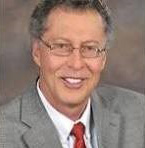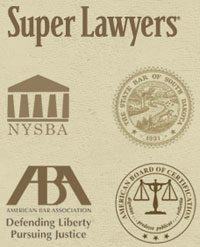A recent South Dakota Supreme Court decision, Holsti v. Kimber, has shed light on two areas of the dormant mineral act, previously untouched by South Dakota’s highest court: first, what constitutes “use” and “nonuse” of a mineral interest in order for a claimant to keep ownership of the mineral interests, and second, who may exercise that “use” of mineral interests. Though other issues remain unanswered following the decision, the ruling suggests what a mineral interest owner may do to prevent lapse of one’s mineral interest and what a mineral interest owner may do to keep his interest in a mineral estate. This case is the first time the South Dakota Supreme Court has addressed head-on dormant mineral laws.
South Dakota defines a mineral interest as “any interest, in oil, gas, coal, clay, gravel, uranium, and all other minerals of any kind and nature, whether created by grant, assignment, exception, reservation, or otherwise, owned by a person other than the owner of the surface estate.” A mineral interest is considered abandoned if it is “unused” for 23 years (20 years in North Dakota), and a statement of claim is not recorded within that time. I call this the “Mineral Rights Grace Period.” Upon an abandonment, that is a non-use, the surface estate owner may succeed to the mineral interest of another claimant.
In order to maintain ownership of a mineral interest and avoid lapse, the mineral interest must be “used.” “Use” under the statute may include one of several statutorily defined “uses.” One such “use” relevant to this case is:
Any conveyance, valid lease, mortgage, assignment, order in an estate settlement proceeding, inheritance tax determination affidavit, termination of life estate affidavit, or any judgment or decree that makes specific reference to the mineral interest is recorded …
It is the burden of the mineral interest owner to maintain his interest. Upon lapse, the burden shifts to the surface estate owner (the landowner) to take steps to succeed in the mineral interest. In Holsti, the issue before the court was whether the mineral interest owners fulfilled their burden to maintain their interest in the mineral estate.
The facts of the case: in 1967, Severt Kvalhein conveyed real property to Holsti and recorded the deed. In the sale Kvalhein reserved 50 percent of the mineral rights for himself. Two years later, in 1969, Kvalhein died and his estate was devised to eight heirs, each heir taking a one-eighth interest in the minerals.
In 2007, Holsti conveyed his surface estate to his sons (“the Holstis”). In December 2011, the Holstis published a notice of lapse of mineral interest in the official county newspaper in according with the statutes to recover mineral interests. No one responded by recording a statement of claim asserting ownership of the mineral interest. The Holstis filed a quiet title action in May 2012 alleging abandonment of the mineral interest due to “nonuse.”
Kvalhein heirs answered and rejected the argument that the mineral interest was abandoned. In their defense, the heirs referenced several 1978 oil and gas leases, a 1994 statement of claim by one of the heirs, and two mineral deeds recorded by one of the heirs in 1998 and 2011.
The court looked to whether the Kvalheim heirs had a valid mineral interest at all. The trial court had decided they did not have a valid interest because no document was recorded evidencing transfer of the mineral interests to the heirs and reasoned that “use” of a mineral interest could only be done by a “record owner.” The Supreme Court rejected that reading of the statute and found that the heirs did not need a recorded written document conveying Kvalheim’s mineral interest to them. The court found the Kvalheim’s last will and testament, though unrecorded, was sufficient to convey the mineral interest to the heirs upon Kvalheim’s death.
Once the court determined the heirs had an interest in the mineral estate, it next turned to whether or not that interest had been abandoned due to “nonuse,” or if the heirs had satisfied “use” requirements. The circuit court found the 1978 oil and gas leases recorded by the heirs were insufficient because they did not make specific reference to the mineral deed recorded by Kvalheim in 1967. The Supreme Court disagreed. Because the language of the statute does not specifically use the words “record holder” or “original deed” the court held the only two requirements for a recorded oil and gas lease to satisfy “use” were: 1) a specific reference to the mineral interest in question and 2) recording in the county register of deeds office. Because the heirs’ oil and gas leases specifically referred to the legal description of the mineral and because the leases were recorded in the proper county’s register of deeds office, the Court found the leases to be sufficient as “use.” (In a similar 2013 case decided by the North Dakota Supreme Court, Estate of Christeson v. Gilstad, the court also found that a legal mineral interest owner by inheritance, but not a record owner, could record an oil and gas lease to preclude abandonment of the mineral interest).
By exercising their rights as mineral interest holders and recording oil and gas leases in 1978, the Kvalheim heirs reset the clock back to zero on the 23-year test for abandonment. Therefore, from the last recorded lease in 1978, the heirs had 23 years in which the surface estate owners could not claim abandonment. Before the expiration of the 23 years (1978-2001), two Kvalheim heirs recorded documents sufficient to toll the clock back to zero again: in 1994, one heir recorded a valid statement of claim; and in 1998 and 2011 two valid deeds were recorded conveying the mineral interest between heirs. The court found both the statement of claim and mineral deeds constituted a “use” under the law and precluded abandonment. The court did not decide and instead remanded to the circuit court an additional issue: whether these two “uses” by Kvalhein heirs were sufficient to preserve the other six heir’s mineral interests.
In their holding, the court has clarified who may be a mineral interest holder and what they must do to satisfy the burden of “using” their mineral estate. This clarification is to the benefit of mineral interest holders because non-record holders may still protect their interests (though, it would be better practice to record an interest). Interestingly, in this case the mineral interest claimants were able to keep their claims even though the claims came through a will that was never probated.
David Ganje of Ganje Law Offices practices natural resources, environmental and commercial law.
David L Ganje
Ganje Law Offices
Web: lexenergy.net
605 385 0330






